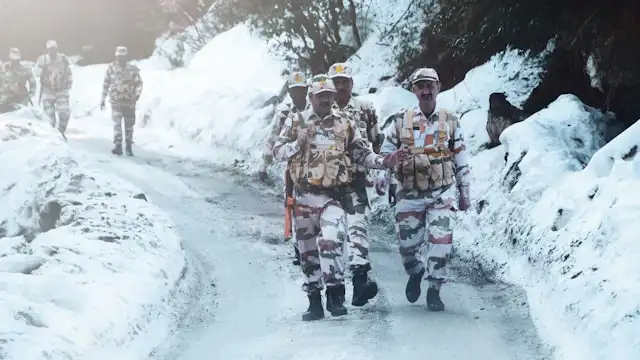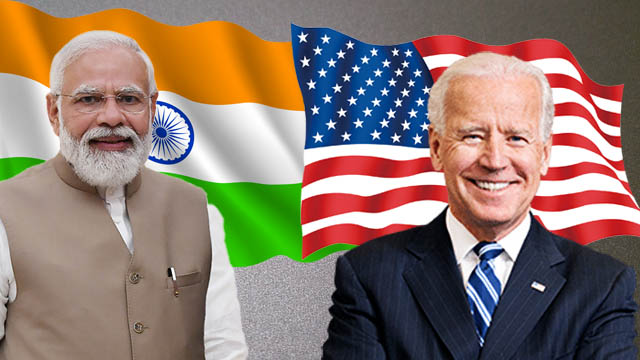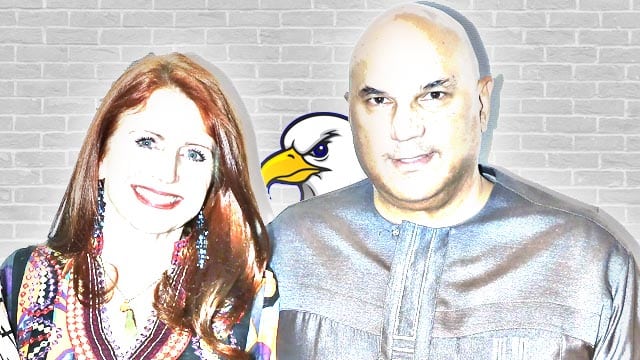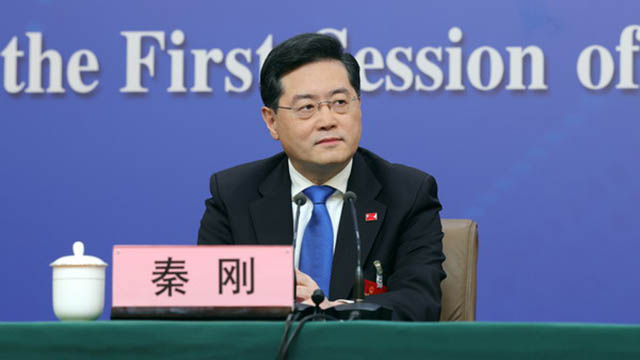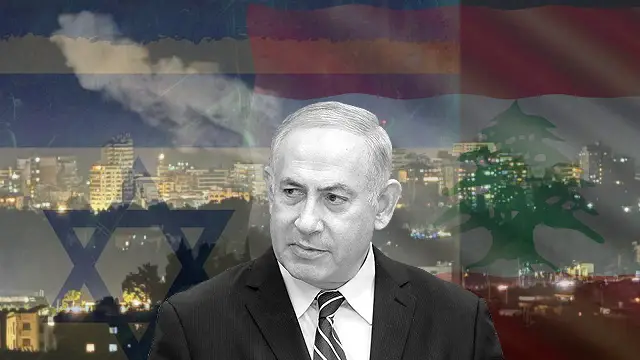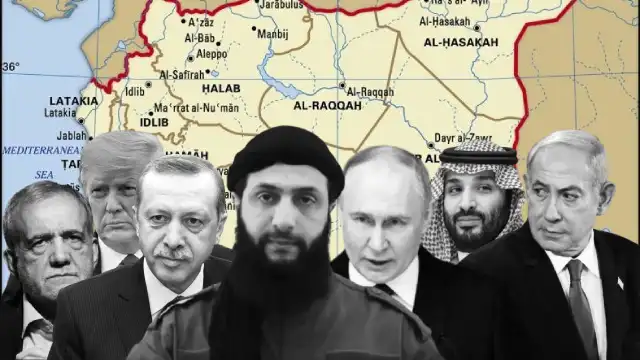Following the April 22nd Pahalgam terror attack, India’s federally ruling Bharatiya Janata Party (BJP) and its affiliate mainstream media companies have been demanding retaliation to avenge the killings.
Speaking at an all-party meeting on Thursday, Prime Minister Narendra Modi claimed that India would pursue the perpetrators of the Pahalgam terror attack “to the end of the world” and “punish them”.
While there are speculations regarding an emulation of the February 2019 “surgical strike”, which India claimed destroyed the terrorists’ shelter used as a launchpad for the February 14th 2019 attack on a paramilitary convoy in Jammu & Kashmir’s Pulwama district that killed 40 soldiers, the inherent issues that pose problems for the Indian side are immense to overlook.
Although the nationwide jingoistic fervour calling for a total war with Pakistan can’t compel the government to launch a war, ignoring the heavy costs, logistical issues and geopolitical realities, the frenzy that prevails in India following the Pahalgam terror attack raises several questions regarding the Modi government’s achievements against Pakistan-sponsored cross-border terrorism.
Pahalgam terror attack: Under the shadow of Pulwama
After the Pulwama attack in February 2019, Mr Modi launched a controversial “surgical strike” along the Line of Control (LoC), which the government and the BJP claimed killed over 300 terrorists.
Although Pakistani authorities countered India’s claims stating that the strikes have hit only “a few trees and a crow”, and the Opposition demanded evidence from the government, Mr Modi and the BJP have downplayed them and have claimed that a “new India” has been born, which can “go into houses (of the enemies) and kill”.
The optics of surgical strikes, of revenge, have helped Mr Modi sway the Hindutva-incensed xenophobic voters in the 2019 Lok Sabha elections, held within two months of the strike, and win a landslide victory.
However, in the last six years, Mr Modi’s government has refrained from releasing any investigation report into the Pulwama attack.
Former Jammu & Kashmir governor Satya Pal Malik, who played a critical role in abrogating the former princely state’s special status in August 2019, has alleged that Mr Modi had asked him not to reveal the state’s lapses behind the Pulwama attack.
Even in these six years, it’s not known how 300kg of RDX was ferried in the valley, which is highly militarised and has a very tight security cover, especially whenever army and paramilitary troops pass.
Later, Jammu & Kashmir Police had arrested a deputy superintendent rank officer, Davinder Singh, accused of ferrying terrorists. It’s alleged that Mr Singh had ferried the perpetrators of the Pulwama attack.
With so many loopholes remaining even after six years, Pulwama pose questions regarding India’s national security.
While Mr Modi has been winning one after another election, claiming his government’s success in securing the nation and crushing terrorism, especially in the valley, however, data shows that violence continued in the valley even after the abrogation of articles 370 and 35A of the constitution.
The chart below shows the gradual rise in terror attacks across the valley following the COVID-19 pandemic.
Critics allege that Mr Modi’s chest thumping over Kashmir has made his government overlook the larger security needs of the restive territory, which allowed the Pahalgam terror attack to take place.
Problem of retaliation
A military retaliation by India has several constraints, despite a nationwide demand for the same being stoked by the far-right Hindutva activists.
Mr Modi’s “surgical strike” theory targets the militants recruited mostly in Pakistan and their infrastructure. While it earns him kudos from his votebank, it doesn’t solve the larger problems for India’s long-term security.
The Pakistani Army, which exerts greater influence on its government, unlike its Indian counterpart, has been using the Islamist terrorists to control Kashmir’s resistance movements and to bleed India in the restive territory.
Those recruited by the Islamist organisations are either paid or highly motivated to sacrifice their lives for their cause. It makes them highly expendable for the Pakistani establishment.
Rather than using its soldiers, the Pakistani Army has been solely dependent on the Islamist extremists it has been funding for decades. It makes its military expenditures against India low-cost and low-risk, as there remains no visible umbilical chord between the Pakistani Army and the extremists.
Meanwhile, India has been spending immense money and has ensured the largest military deployment in the world in Kashmir with over 700,000 soldiers.
While the Indian Army’s actions kill Pakistan-sponsored Islamist extremists in Kashmir, it also loses its soldiers in the anti-militancy operations.
In case of Mr Modi’s much-hyped surgical strikes, which the BJP claimed had scared Pakistan, the purported target was extremists and not the Pakistani Army.
Since 1999, India and Pakistan have not had a military conflict per se. Both governments have avoided military-to-military confrontations despite several provocations from each side.
Although Pakistan also blames India for fuelling unrest in the restive Balochistan province, and alleges that the Indian intelligence agency Research and Analysis Wing (R&AW) is behind the militancy there, New Delhi refutes the charges.
However, a military engagement in the current scenario appears highly problematic for India. Several operational problems were visible during the 2019 incident.
Soon after the much-hyped “surgical strike”, which India claimed it had done along the LoC (considered by New Delhi its own territory), Pakistan conducted an air raid within Indian airspace.
In its attempt to thwart it, India lost one Mig-21 Bison and its pilot, Abhinandan Vartaman, was held captive by the Pakistanis.
Moreover, though India claimed it had shot down a Pakistani F-16, the latter refuted the claim.
Meanwhile, during the same time, Indian air defence had hit an Indian Army helicopter, killing six soldiers onboard, exposing severe technological challenges that the fourth largest military force in the world faces.
Geopolitical realities
Although India has been extensively investing in defence technology and is one of the largest importers of weapons, the geopolitical realities will also stop it from pursuing a direct military conflict with Pakistan.
Mr Modi has been marketing himself as a champion of peace in the Russia-Ukraine conflict and has repeatedly expressed his desire to be a mediator between the two sides.
Critics allege Mr Modi aimed to play a peacemaker, much before US President Donald Trump stepped in, eyeing a Nobel Peace Prize for his role before his retirement from politics.
However, it didn’t work; still, Mr Modi emphasises on global platforms that “this isn’t the era of wars” and advocates dialogue, despite firmly supporting Israel in its Gaza aggression.
Now, to take a 180-degree turn and engage in a direct battle would mean a loss of face and immense damage to Mr Modi’s PR exercise.
While Pakistan has a small, crisis-ridden economy, the Indian economy is worth over $3 trillion, and Mr Modi boasts a target of $5 trillion by expanding bilateral trade with the US and the West.
Mr Modi’s government has repeatedly placed India on the West’s map as the next manufacturing destination amid rising global tariff war and anti-China rhetoric.
A direct military conflict with Pakistan will affect India’s maritime trade and can disrupt the planned India-Middle East-Europe Economic Corridor project.
It can also affect Iran’s Chabahar Port’s operations, which India has built and received on lease.
Moreover, at a time when industrial production is not increasing, taxes create bottlenecks for businesses to grow and unemployment soars, a war will become an economic catastrophe if it affects India’s trade, commerce and investments.
Like India, Pakistan is also a member of the Shanghai Cooperation Organization (SCO) and has been aligning closely with China and Russia.
As India drifts away towards the US-led West, it risks alienating long-term ally Russia.
Pakistan already has cemented ties with Russia and has China as a firm ally beside it.
By alienating China and Russia, India will have to rely heavily on the West, which has failed to safeguard the interests of their own—Ukraine.
Moreover, India will be further isolated within the BRICS, which is a fast-growing platform for the Global South countries. This will bolster Pakistan’s position, which eventually has nothing much to lose diplomatically.
While Israel and the US may support India, they won’t come to its rescue. However, a full-fledged US and Israeli support to India against Pakistan can stir anti-India sentiments across the politically-volatile Middle East, pushing even the Gulf monarchies close to Mr Modi—he was on a Saudi Arabia tour when the Pahalgam terror attack took place—to take a more conservative approach towards India.
Apart from these, India must consider the precarious situation at the Bangladesh border, where hostility with the eastern neighbour has been on the rise over Mr Modi’s undaunted support to deposed prime minister Sheikh Hasina, wanted by Dhaka for her alleged role in the massacres of July 2024 and human rights violations.
Pakistan has improved its ties with Bangladesh following the August 5th uprisings in Dhaka. Moreover, Bangladesh has strengthened ties with China and is also settling differences with the US over the Saint Martin Islands through back-channel diplomacy.
The new reality creates more problems for India.
Diplomatic measures
India has announced five measures against Pakistan after the Cabinet Committee on Security met over the Pahalgam terror attack on April 23rd.
India will suspend the 1960 Indus Waters Treaty immediately. It will remain paused until Pakistan ends its support for cross-border terrorism irreversibly.
The Integrated Check Post at Attari will close at once. Those with valid visas may return via this route before May 1st, 2025.
Pakistanis will no longer qualify for visas under the SAARC Visa Exemption Scheme (SVES). India has cancelled all existing SVES visas for Pakistanis. Those in India on such visas must leave within 48 hours.
India has declared Pakistan’s defence, naval, and air advisers in New Delhi persona non grata. They have seven days to depart. India will also withdraw its own military advisers from Islamabad. Both countries will abolish these posts. Five support staff from each high commission will leave too.
Each high commission must reduce its staff from 55 to 30 by May 1st, 2025.
Now, while the steps regarding downscaling mission sizes or suspending visa services are those that have been implemented, the major one—putting the Indus Waters Treaty (IWT) of 1960 into “abeyance”—although it appears a strong measure, it’s actually one that’s not feasible.
For India to end water supply to Pakistan’s territories as a punishment for the Pahalgam terror attack, it needs to build major dams and reservoirs to store the water.
Even if India starts work on such projects, in geographically challenging territories, from now onwards, it will take over five years to suspend water flow into Pakistan.
Hence, the chest thumping by India’s ultra-right camp, claiming Mr Modi is going to push Pakistan into drought and destroy its agriculture, is quite ill-founded.
Pahalgam terror attack seeks accountability
The inherent problem with Indian democracy under Mr Modi’s increasingly authoritative rule has been exemplified again following the Pahalgam terror attack.
Unlike modern democracies, where heads will roll and the press will fiercely demand accountability from the government, in India, the Opposition and those who advocate for secularism, human rights for Kashmir and peace in South Asia are singled out and blamed for the terror attack.
The scope of questioning the government has been diminished in the country, whose rank has been sliding down on the press freedom index.
TV anchors are competing with each other in spreading jingoism and xenophobia.
Rampant Islamophobia is promoted by the Hindutva camp, and the government’s accountability has been shielded with rhetoric.
Amid this situation, Mr Modi’s government needs an appropriate subterfuge to silence its critics and bedazzle its fans.
While a limited military measure against Islamist extremists in Kashmir remains an easy way out, a full-scale war remains an unlikely option for the time being.
The current trajectory of events indicates Mr Modi will try to win an easy battle that can help him protect his image while maintaining regional geopolitical balance to secure India’s long-term economic interests.
In the war of optics, truth will become the inevitable victim, and accountability shall reach oblivion. At the end of the day, the victims of the Pahalgam terror attack won’t receive any real justice but mere optics.
Join our channels on Telegram and WhatsApp to receive geopolitical updates, videos and more.

